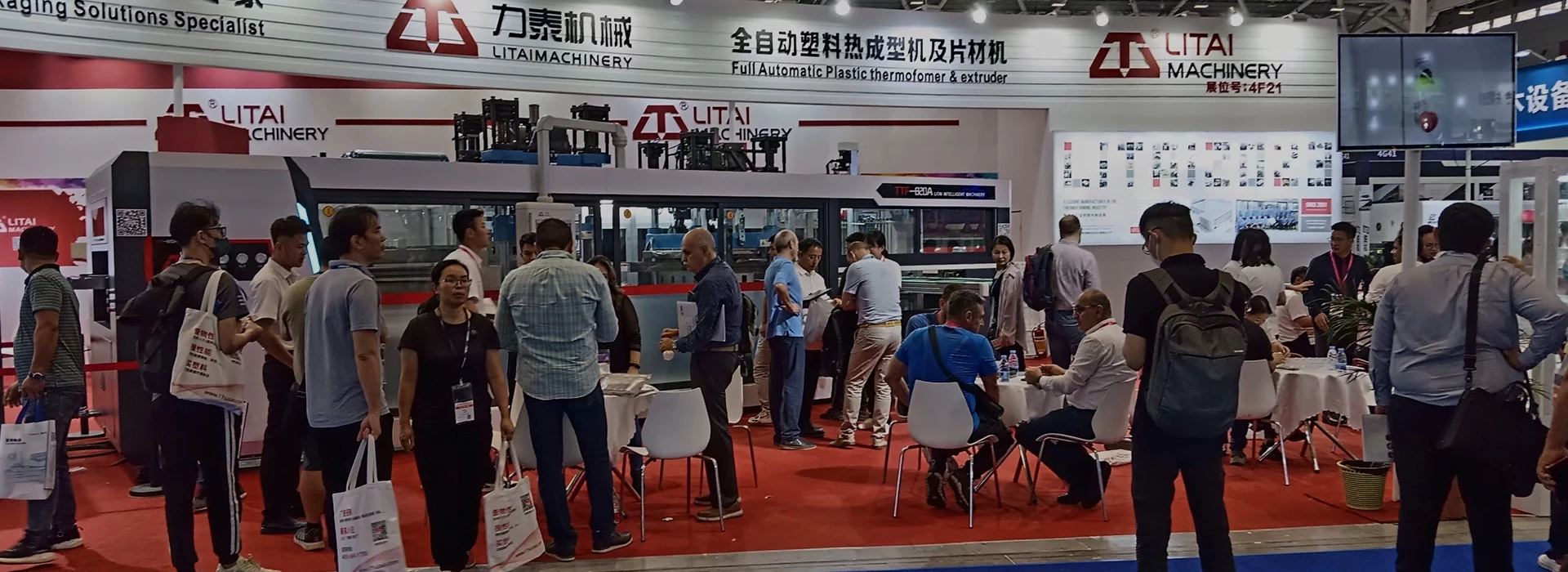What is the connection and difference between thermoforming machines, injection molding machines and blister machines?
What is the connection and difference between thermoforming machines, injection molding machines and blister machines?
1. Injection molding machine
1. Working principle
The injection molding machine heats the plastic raw material (usually granular thermoplastics) to a molten state, and then injects the molten plastic into a closed mold under high pressure through a screw. The plastic cools and solidifies in the mold, and finally forms the desired product. The whole process includes steps such as plastic melting, injection, pressure holding, cooling, mold opening and demolding.

2. Process steps
Plastic melting: The plastic raw material is heated to a molten state by a heater.
Injection: The screw pushes the molten plastic into the mold cavity through the nozzle.
Pressure holding: In order to prevent the plastic from shrinking when cooling, a certain pressure is applied after injection to maintain the density of the plastic in the mold.
Cooling: The plastic in the mold cools and solidifies into a predetermined shape.
Mold opening: The mold opens and the product is taken out of the mold through the ejection mechanism.
3. Application areas
Injection molding machines are widely used in the manufacture of products that require high precision, high strength and complex geometric shapes, such as:
Automobile industry: Production of automotive interior and exterior trim, engine hood, bumper and other parts.
Home appliance manufacturing: Production of TV housings, washing machine parts, refrigerator drawers, etc.
Consumer electronics: such as mobile phone housings, laptop housings, keyboard keys, etc.
Medical devices: such as syringes, medicine bottles, medical trays, etc.
4. Advantages and disadvantages
Advantages:
It can produce parts with complex shapes and high dimensional accuracy.
It is suitable for large-scale production with low unit product cost.
It can realize products of various colors and materials.
Disadvantages:
High mold cost and long development cycle.
Large initial investment in equipment, complex process, and high requirements for operating technology.
2. Vacuum forming machine
1. Working principle
The working principle of the vacuum forming machine is to soften the plastic sheet (usually polystyrene, polypropylene, etc.) by heating, and then adsorb the softened plastic sheet on the mold surface through vacuum to make it consistent with the mold shape. After cooling, the plastic sheet solidifies and forms the desired shape.


2. Process steps
Heating: The plastic sheet is heated to a softened state by an infrared heater or an electric heater.
Adsorption: The heated and softened plastic sheet is vacuum-adsorbed to the mold surface to form the shape of the mold.
Cooling: The plastic sheet after adsorption molding is cooled and solidified by the cooling system.
Cutting: Cut off the excess plastic edges to obtain the final product.
3. Application areas
Blister machines are mainly used to produce various packaging products, especially in the following fields:
Food packaging: such as disposable tableware, food trays, cup lids, etc.
Electronic product packaging: such as electronic component trays, blister packaging, etc.
Daily necessities packaging: such as toy packaging, stationery packaging, cosmetics packaging, etc.
4. Advantages and disadvantages
Advantages:
Fast molding speed, suitable for mass production.
The equipment and mold costs are low, suitable for small and medium-sized enterprises.
The process is relatively simple and easy to operate.
Disadvantages:
Only products with relatively simple shapes and thin walls can be produced.
The strength and precision of the finished product are not as good as injection molding.
The material utilization rate is low and there are more scraps.
3. Plastic Thermoforming Machine
1. Working Principle
Plastic thermoforming machine is a device that softens plastic sheet or film by heating, and then applies pressure or vacuum through the mold to make the plastic sheet contact with the mold and form it. According to different molding methods, thermoforming machines can be divided into vacuum molding, compression molding and other types.

2. Process steps
Heating: The plastic sheet is heated to a plastic state by a heater.
Molding:
Blister molding: Similar to a blister machine, the softened plastic sheet is adsorbed on the mold surface by vacuum.
Compression molding: The plastic sheet is pressed into the mold by mechanical pressure or gas pressure.
Cooling: The plastic sheet is cooled and solidified in the mold.
Trimming: Remove the molded plastic product from the mold and remove excess material.
3. Application areas
Plastic thermoforming machines are widely used and can be used for both packaging and industrial product production, including:
Food packaging: such as yogurt cups, plastic bowls, disposable tableware, etc.
Industrial parts: such as automotive interior parts, aviation parts, etc.
Medical devices: such as pharmaceutical packaging, disposable medical supplies, etc.
4. Advantages and disadvantages
Advantages:
Fast molding speed.
Flexible process, strong adaptability, can be used for a variety of molding methods and adapt to the production of a variety of materials.
The mold cost is relatively low, suitable for small and medium batch production.
Suitable for the production of products of medium complexity and size.
Disadvantages:
The precision and complexity of the product are not as good as injection molding.
For mass production, the unit product cost may be higher.
It is not easy to make thicker plastic parts.
IV. The connection and difference between the three
1. Connection
Material: All three devices usually use thermoplastic materials, such as polystyrene, polypropylene, ABS, etc.
Heating process: They all involve heating the plastic material to a certain temperature to soften or melt it for molding.
Purpose of molding: The ultimate goal of the three is to mold the plastic into the desired shape through different processes, although the application fields are different.
2. Difference
Molding method:
The injection molding machine injects molten plastic into the mold through high pressure, which is suitable for high-precision and complex-shaped products.
The vacuum forming machine absorbs the softened plastic sheet on the mold surface through vacuum, which is suitable for thin-walled products with simple shapes.
Thermoforming machines are molded in a variety of ways (vacuum forming, compression molding, etc.), with flexible processes and suitable for medium-complexity products.
Application areas:
Injection molding machines are mainly used for large-scale production of industrial products and durable goods, such as automotive parts, electronic product housings, etc.
Blister machines are mainly used in the packaging industry, especially food packaging and consumer goods packaging.
Thermoforming machines have a wide range of applications, and can be used for packaging as well as for the production of some industrial parts and medical devices.
Production cost and speed:
Injection molding machines are suitable for large-scale production, with low unit costs, but high initial investment in molds and equipment.
Blister machines are suitable for mass production, with low mold costs, but low material utilization.
Thermoforming machines are suitable for small and medium-sized batch production, with flexible processes, but slow production speeds.
In summary, although injection molding machines, blister machines, and plastic thermoforming machines are all used for plastic processing, their process characteristics, application fields, and molding methods are different. When choosing which equipment to use, it is necessary to comprehensively consider the shape complexity, production batch, cost requirements, and material properties of the product.

